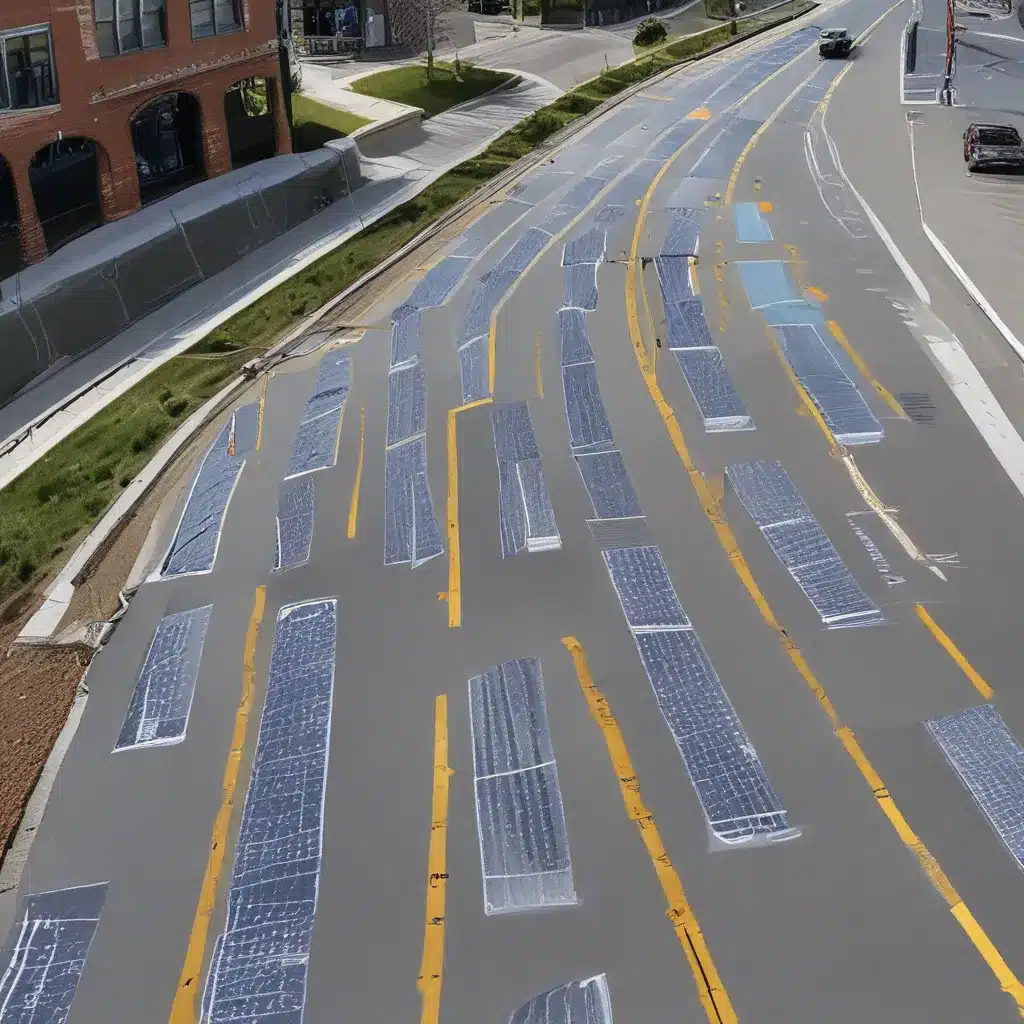
The Dream of Solar Roadways
Back in 2014, I stumbled upon a video that captured my imagination. It was titled “Solar FREAKIN’ Roadways!” and it promised a future where our roads and sidewalks would become enormous solar panels, powering our communities and ushering in a new era of renewable energy. Needless to say, I was intrigued.
The video was created by an Idaho-based company called Solar Roadways, and they had big dreams. According to them, we could produce three times our annual energy consumption by converting our existing road network into solar roadways. No more dirty fossil fuels – just clean, abundant energy, right under our tires.
It sounded too good to be true, but I couldn’t help but get excited at the prospect. Imagine a world where our streets and sidewalks were not just practical, but also environmentally friendly and packed with futuristic features. LED lights to illuminate dark roads, heating elements to melt snow and ice, and even inductive charging for electric vehicles – the possibilities seemed endless.
The Challenges of Solar Roadways
Unfortunately, as I delved deeper into the topic, I quickly realized that the reality of solar roadways was a bit more complicated than the captivating video had led me to believe. While the concept was undoubtedly innovative, the challenges facing this technology seemed daunting.
For starters, the cost of installing solar roadways was astronomically high. Experts estimated that the panels would cost 3-4 times the price of a standard asphalt road, and that’s before accounting for all the other components required for a functional solar road system.
But the price tag wasn’t the only issue. Engineers had been unable to create a solar road panel that could withstand the immense pressure and wear-and-tear of heavy vehicles while still allowing enough sunlight to reach the solar cells. The glass surface also raised concerns about traction and safety for fast-moving traffic.
And even if they could overcome those hurdles, the actual energy production of these solar roadways was woefully inadequate. According to expert analysis, solar roadways only generate about one-third the power of a comparable solar power plant. Factors like shading from vehicles, buildings, and debris, as well as the inability to tilt the panels to optimize sun exposure, all contributed to this lackluster performance.
The Reality of Solar Roadways (So Far)
Despite the grand promises and the viral hype, the reality of solar roadways has been rather disappointing. Between 2016 and 2017, news circulated about a Solar Roadways installation on Route 66 in Missouri, but it turned out to be a solar sidewalk project that never materialized. The only place their product has been used is in a small 150-square-foot pilot installation in their hometown of Sandpoint, Idaho, which faced its own set of issues.
Other attempts at solar roadways around the world have been equally underwhelming. The WattWay project in France, for instance, closed down after just a few years due to the inability to withstand normal traffic and generate the expected amount of power. And in China, a highly publicized “world’s first solar highway” was closed within a week after sustaining damage from traffic and theft.
It’s clear that the dream of solar roadways is still a long way from becoming a reality. The technical and economic hurdles have proven to be too significant for the technology to take off in a meaningful way, at least for now.
The Bright Future of Solar Energy (Just Not in the Roads)
So, if solar roadways are such a disappointment, does that mean the future of solar energy is doomed? Absolutely not! In fact, the success of standard solar panels, commonly known as photovoltaic (PV) systems, tells a very different story.
While the US has only managed to install one solar roadway so far, there are already over three million solar panel installations nationwide. These rooftop and ground-mounted solar systems are proving to be a much more affordable, efficient, and scalable solution for renewable energy production.
Solar energy plants built with standard PV panels are now among the cheapest sources of energy production, and total solar capacity in the US is expected to triple between 2022 and 2027. And for homeowners, a typical rooftop solar panel installation can cover 100% of their energy usage and save them $50,000 or more in avoided utility bills, depending on their location.
The lesson here is that sometimes the most innovative-sounding solutions aren’t always the best ones. While the idea of solar roadways captured our imaginations, the practical and financial realities have proven to be too much of a hurdle for the technology to take off. But that doesn’t mean the future of solar energy is any less bright – it’s just going to be realized in a different way, one rooftop and solar farm at a time.
Conclusion: Keeping an Open Mind (and Eyes on the Road)
As much as I wanted to believe in the dream of solar roadways, I’ve come to accept that it’s not the panacea for our renewable energy woes. The challenges are simply too great, and the alternatives like standard solar panels are just too practical and cost-effective to ignore.
But that doesn’t mean I’ve given up on the idea entirely. I’m still keeping my eyes peeled for any breakthroughs or advancements in solar roadway technology, and I’m genuinely excited to see what the future holds. Who knows, maybe one day we’ll be driving on roads that not only get us from A to B, but also power our homes and communities.
For now, though, I’ll stick to admiring the solar panels on my own roof, secure in the knowledge that they’re doing their part to create a cleaner, more sustainable future. And when I’m out on the road, I’ll be sure to keep my eyes focused on the actual pavement, rather than dreaming of a world where the streets themselves are solar-powered. After all, safety first – even in the age of renewable energy!


